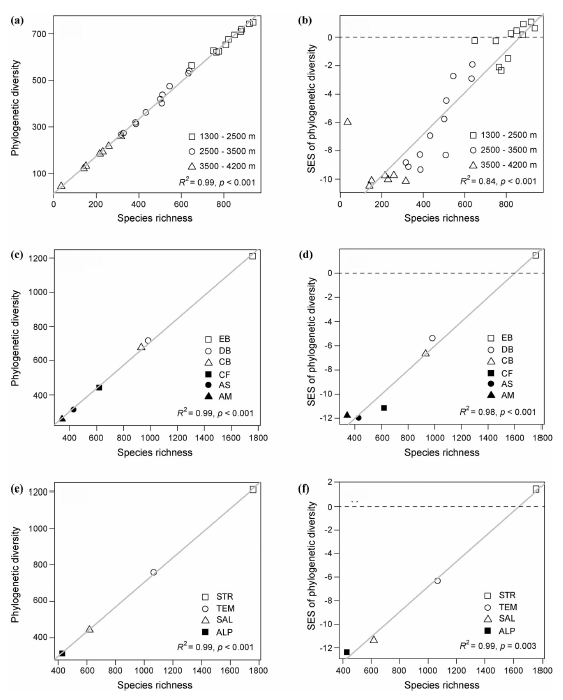Biodiversity conservation has long been a focus of research as species extinction risks resulting from global climate change, habitat fragmentation, and increased human population density have grown in recent decades. While many studies have focused on species richness and the protection of rare and endemic species, less attention has been paid to the protection of the phylogenetic dimension of biodiversity.
Dr. Rong Li and his colleagues from Kunming Institute of Botany, Chinese Academy of Sciences, explore how phylogenetic diversity, species richness and phylogenetic community structure vary in seed plant communities along an elevational gradient in a relatively understudied high mountain region, the Dulong Valley, located in southeastern Tibet, China. As expected, phylogenetic diversity was well correlated with species richness both among the altitudinal bands and among communities. At the community level, evergreen broad-leaved forests had the highest levels of species richness and phylogenetic diversity. Using null model analyses, the authors found evidence of nonrandom phylogenetic structure across the region. Evergreen broad-leaved forests were phylogenetically overdispersed, whereas other vegetation types tended to be phylogenetically clustered. The authors suggest that communities with high species richness and/or overdispersed phylogenetic structure should be a focus for biodiversity conservation within the Dulong Valley because these areas may help to maximize the potential of this flora to respond to future global change.In biodiversity hotspots worldwide, the authors suggest that the phylogenetic structure of a community may serve as a useful measure of phylogenetic diversity in the context of conservation planning.
These results have been published on line in Conservation Biology titled “Seed plant phylogenetic diversity and species richness in conservation planning within a global biodiversity hotspot in eastern Asia”
Online: http://onlinelibrary.wiley.com/doi/10.1111/cobi.12586/full
The study was supported by the National Natural Science Foundation of China (grant no. 31370243), Natural Science Foundation of Yunnan (grant no. 2014FB169), and the open fund of Key Laboratory for Plant Diversity and Biogeography of East Asia, Kunming Institute of Botany, Chinese Academy of Sciences (grant no. KLBB201204).

Figure: Relationship between species richness and phylogenetic diversity (100 million years) among the altitudinal bands (a, b), among the communities (c, d), and among the zones (e, f).
Contact:
Key Laboratory for Plant Diversity and Biogeography of East Asia, CAS
Kunming Institute of Botany
Dr. LI Rong
Email: lirong@mail.kib.ac.cn




